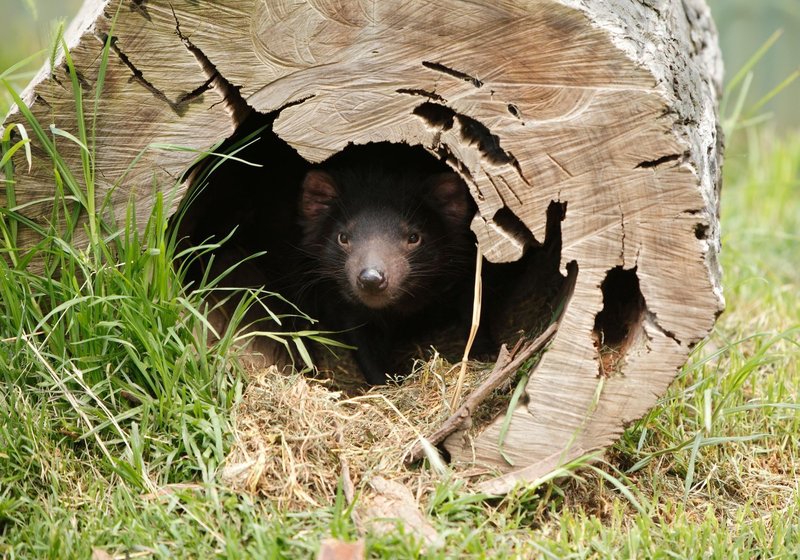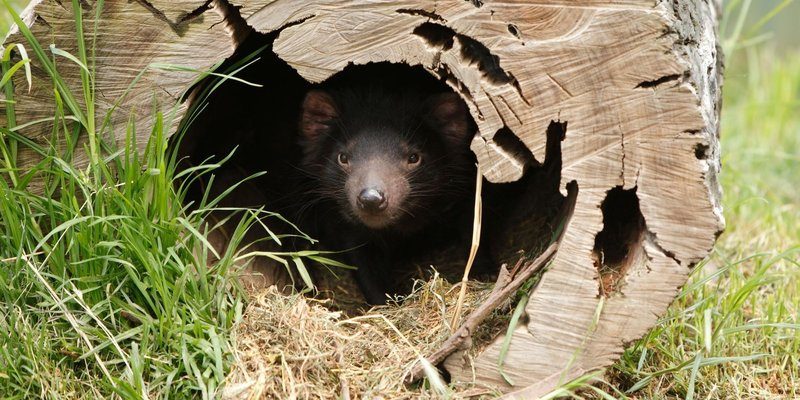
You might be wondering why these creatures are so tied to Tasmania. Well, they have a rich history that connects them to this specific location. With a combination of climate, food sources, and geographical features, Tasmania provides the perfect home for these carnivorous marsupials. Let’s explore where Tasmanian devils live, dive into their habitat preferences, and understand the challenges they face in the wild.
The Range of the Tasmanian Devil
Tasmanian devils are endemic to Tasmania, which means they are found nowhere else in the world. Imagine being part of an exclusive club that only exists on a beautiful island! While there were historical populations on the Australian mainland, they have since disappeared, leaving Tasmania as the sole home for these quirky animals. The rugged, diverse landscape of Tasmania plays a significant role in their distribution.
The devils thrive in various ecosystems across Tasmania, from coastal regions to mountainous areas. They are highly adaptable, which is impressive for such a unique species. This adaptability allows them to occupy a wide range of habitats, such as:
- Forests: Both wet and dry eucalyptus forests provide cover and food.
- Scrublands: These dense areas offer shelter for hunting and resting.
- Grasslands: Open spaces where they can roam freely and find carrion.
However, despite their extensive range on the island, the population of Tasmanian devils is under threat due to disease and habitat loss.
Habitat Preferences
Tasmanian devils are nocturnal creatures, meaning they are most active at night. This means their habitats need to provide both shelter and hunting grounds. They prefer areas with dense undergrowth or rocky outcrops that offer protection from predators while they rest during the day.
In these environments, the devils are skilled scavengers. They rely heavily on carrion—dead animals—for food, so being close to their hunting grounds is essential. Tasmanian devils can travel several kilometers each night in search of meals, showcasing their ability to cover large areas in search of food.
Here’s the thing: their habitat isn’t just about finding food. The socio-political landscape of Tasmania plays a role in where and how they live. Conservation efforts are crucial to maintaining healthy populations, as their habitat needs protection from human activity and natural disasters.
Climate Conditions
Tasmania boasts a temperate maritime climate, which is ideal for Tasmanian devils. The island experiences mild summers and cool, wet winters, creating a diverse environment that supports a wide range of flora and fauna. This climate allows for the growth of thick underbrush and a variety of trees, which provide the necessary cover for devils.
You might be wondering how climate affects their living conditions. Well, extreme weather events, such as bushfires or droughts, can significantly alter their habitat. Such events can reduce food availability and disrupt breeding patterns. The devils rely on a stable climate to thrive, making conservation efforts even more critical in the face of climate change.
Human Impact on Their Habitat
Human activity has had a significant impact on Tasmanian devils and their distribution. Land clearing for agriculture, urban development, and logging can fragment their habitats, making it harder for them to find food and mates. Roads can also be dangerous for these nocturnal animals, leading to many roadkill incidents.
On top of that, the emergence of the fatal Devil Facial Tumor Disease (DFTD) has devastated devils’ populations across Tasmania. This contagious cancer has reduced their numbers dramatically, further threatening their already fragmented habitats. Conservationists are working hard to mitigate these impacts, focusing on protecting wild populations and their environment.
Conservation Efforts
Given that Tasmanian devils are facing numerous threats, conservation efforts are crucial. Organizations are actively working to preserve their habitat and support their population recovery. One key strategy involves creating wildlife corridors that connect fragmented habitats, allowing devils to move freely and find food sources and mates.
These efforts often include active monitoring of devil populations to assess their health and implement breeding programs in captivity. You might find it interesting that some of these programs have seen success, helping to reintroduce healthy devils back into the wild.
Education, too, plays a vital role. Raising awareness about the challenges Tasmanian devils face helps garner public support for conservation initiatives and encourages responsible land use.
What Can You Do to Help?
You might feel inspired to help Tasmanian devils after learning about them! There are plenty of ways you can contribute to their conservation:
- Support organizations that focus on wildlife preservation and research.
- Spread the word about Tasmanian devils and their challenges.
- Participate in eco-tourism that emphasizes responsible interactions with wildlife.
By engaging with these efforts, you’re playing a part in ensuring a sustainable future for these extraordinary creatures.
Tasmanian devils are remarkable animals with a unique place in our world. Their habitat in Tasmania is not just a home; it’s a delicate ecosystem that needs our protection. From understanding their distribution and habitat preferences to recognizing the challenges they face, we can appreciate the role we play in their survival.
Let’s keep the conversation going about Tasmanian devils and the importance of preserving their home. With collective efforts, we can help ensure that these fascinating creatures continue to thrive on their beautiful island.

